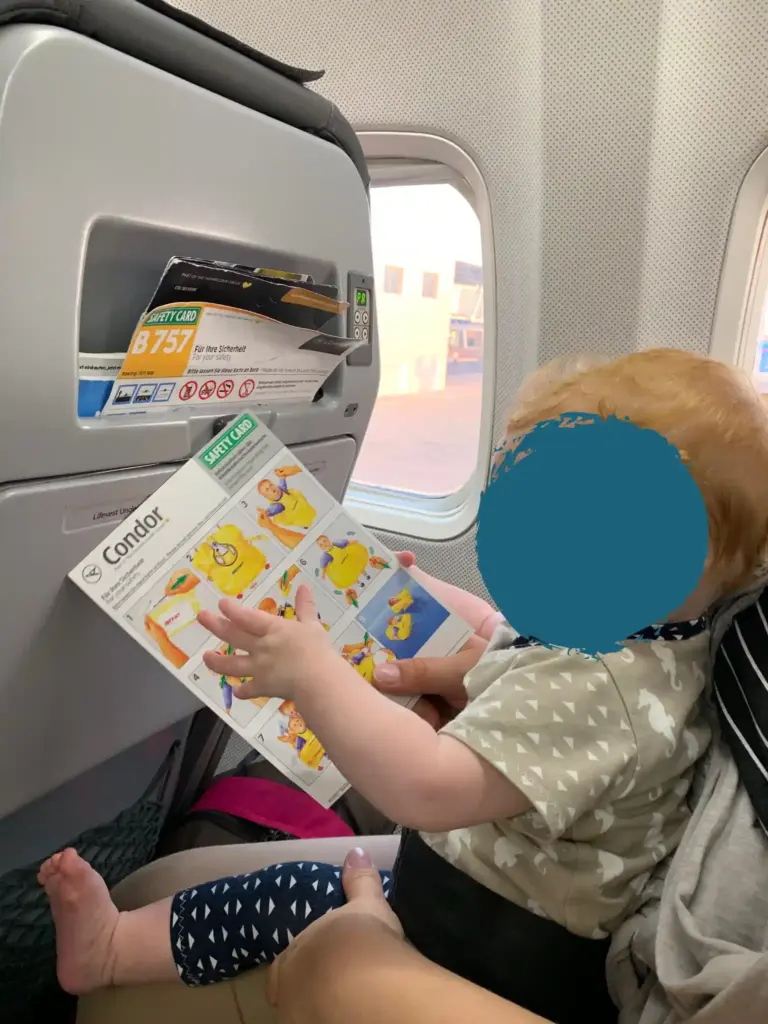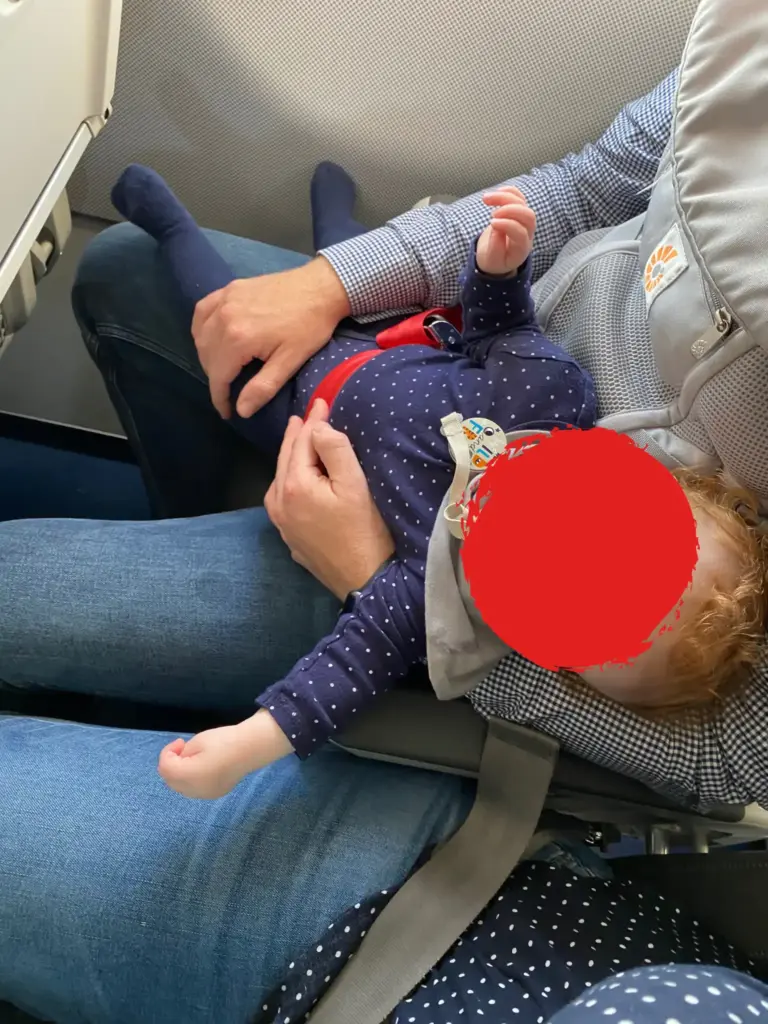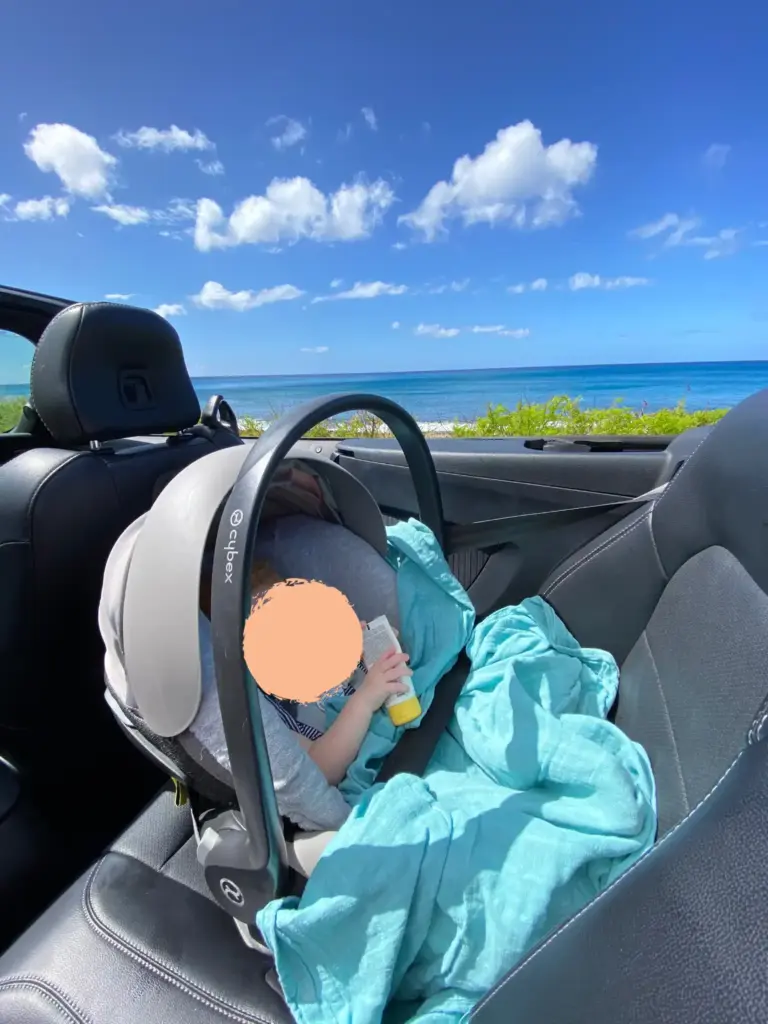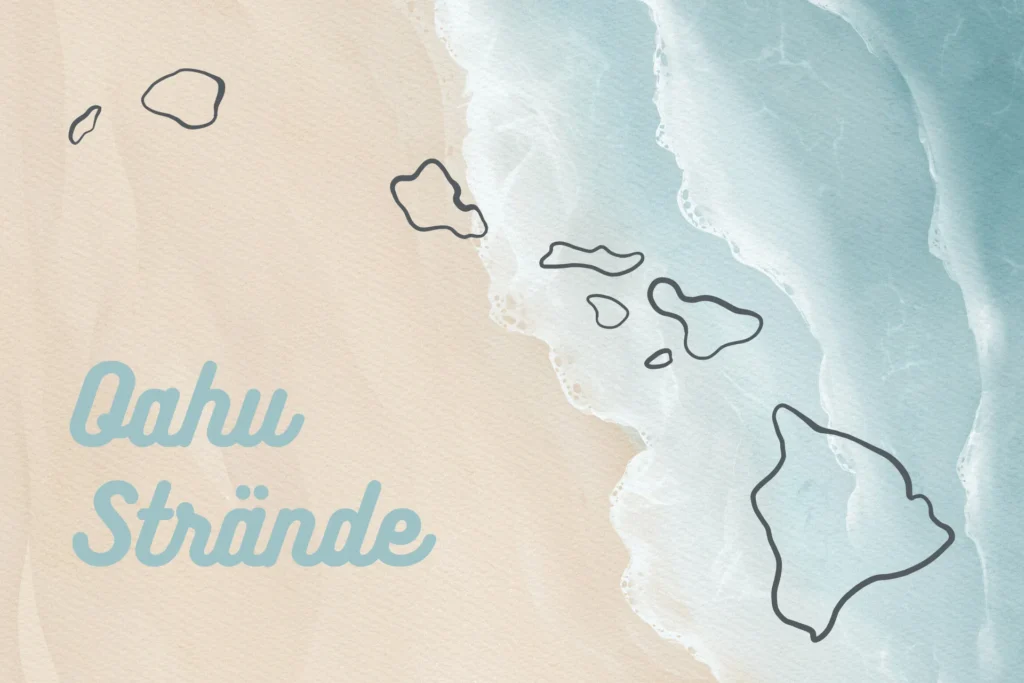Long-haul travel with a baby? At first glance, that might sound like a challenge that could push you to your limits. But hey, let’s be honest: parenthood itself is the greatest adventure, isn’t it? So why not discover the world together with your little one? Of course, it requires careful planning and some special considerations, but long-haul travel with a baby can become one of the most beautiful and formative experiences in your family life. In this guide, we’ll walk you through it and share valuable tips and tricks to make your long-haul trips with a baby an unforgettable and stress-free adventure!
Inhalt
Toggle
The Best Time
When can my baby travel long-haul?
Theoretically, babies can fly very soon after birth. Most airlines accept 14-day-old babies. But is that really advisable?
Ideal Travel Age for Babies
Most parents want a definitive answer regarding the ideal travel age for long-haul trips with a baby, but unfortunately, no one can give you one. Every baby is unique, and of course, you also need to feel fit enough to travel at the time.
Also keep in mind that a younger baby still sleeps a lot, making travel more relaxed. The older your baby gets, the more mobile they will be, perhaps crawling or taking their first steps.
Our Flight Experiences
We traveled a lot around the world in her first year of life, and Emily completed 15 short-, medium-, and long-haul flights by her 1st birthday. And they were all completely different! Because not only age plays a role, but also their mood on the day. After all, your mood isn’t the same every day either.
On all flights during the first 6 months, our baby required little entertainment or movement. For us as parents, with good preparation, these flights were definitely more relaxed than those later with a toddler. As they reached crawling age and developed an interest in their surroundings (7-12 months), travel changed and became more demanding.

Choosing Your Destination
How do I find the right destination for long-haul travel with a baby?
The world is full of amazing places just waiting to be discovered. Even with a baby in tow, the adventure doesn’t have to stop. However, especially when it comes to long-haul travel with a baby, parents often have many questions.
Which destination is best for the first big trip with your little one?
When choosing the ideal destination with a baby, in addition to your personal preferences, other factors such as climate, health risks, local infrastructure, and of course, the country’s baby-friendliness play a role. It’s about finding a balance between adventure and comfort so that your entire family can fully enjoy the trip.
Climate at the Destination
Ask yourself beforehand: What is the climate like at your planned travel time? Is it suitable for the baby, or are there extremely high temperatures, high humidity, or perhaps the rainy season?
Health While Traveling
Research which vaccinations are recommended for the destination and discuss with your pediatrician whether they are also suitable for babies. Also, clarify beforehand whether there is good local medical care. Furthermore, find out what risks exist locally. For example, with a baby, you should avoid malaria areas and other high-risk regions.
USA - Our Favorite Long-Haul Destination
We took two long-haul trips with our baby in her first year of life. For both trips, we chose the USA.
Once we flew to New York when Emily was 8 months old, and once we flew to Maui when Emily was 10 months old.
These were two destinations we had visited before without a baby, and where we didn’t have to worry about health risks.

Long-Haul Flight with a Baby
Tips for Booking Flights
Once you’ve decided on a destination, you can start looking for a suitable flight. For an initial overview, we like to use Google Flights or Skyscanner.
Think about the criteria you want to use when choosing your flight.
Direct Flight or Layovers
Night Flight or Day Flight
Consider booking a night flight. Chances are your baby will sleep during the flight, as it aligns with their usual bedtime. This can make the flight more pleasant for you.
But also keep in mind: Some parents feel a lot of pressure for the baby to sleep, because after all, most passengers on a night flight want to sleep.
Safety on the Plane - Own Seat: Yes or No
Babies up to 2 years old are allowed to fly on an adult’s lap. In Europe, a so-called loop belt is available to secure your baby. Outside of Europe, babies are held on your lap during flights. The use of the loop belt is highly controversial, as it does not protect your baby during sudden braking or turbulence. However, the majority of passengers use this option.
Alternatively, you can also purchase a seat for your baby. Note that a suitable infant car seat must be brought along for this. TÜV has certified infant car seats for aircraft. You can find a list here.

Myth: Babies Travel Free Under 2 Years Old
It’s a common misconception that babies under 2 years old generally fly for free. Yes, they often pay less than adults, but that doesn’t mean they travel completely free of charge.
If you fly with a baby under 2 years old and don’t book a separate seat for the child, the baby usually pays a so-called “Infant Fare.” This fare varies depending on the airline and route, but is often between 10% and 25% of the regular adult fare.
Our Flight Costs with a Baby to the USA
The flight from Germany to New York with Lufthansa cost 10% of the adult fare for our baby without a separate seat. So we paid €0 for the flight fare plus €27 in taxes and fees for our baby.
The flight from Germany to Maui, Hawaii, with American Airlines cost approximately 25% of the adult fare. Here we had to pay €91 for the flight fare plus €143 in taxes and fees.
Local Transportation
Infant Car Seat or Child Seat
If you want to use a rental car or travel by taxi locally, it makes sense to use an infant car seat or child seat.
You can rent these from most car rental providers, or you can buy a suitable model locally.
The use of German infant car seats and child seats is unfortunately not permitted in many countries, such as the USA and Australia, due to insurance reasons.

Baby Carrier and Stroller
For transporting your baby, you should also bring a baby carrier and a stroller. This way, your baby can easily sleep while you’re out and about.
We have summarized how you can protect your stroller on flights here.

Baby-Friendly Accommodation
Apartment or Hotel
Consider whether you’d prefer to stay in an apartment or a hotel.
What suits your preferences?
Apartment: Pros and Cons
Apartments are usually individual accommodations with multiple rooms and plenty of space. Especially with a baby, having your own kitchen and a separate bedroom can be a practical advantage. This way, you can start the day at home with breakfast, or your baby can sleep in the bedroom while you still enjoy the evening in the living room.
One disadvantage, however, is that you have to take care of everything yourself in an apartment. This might slightly diminish your vacation vibe.
Hotel: Pros and Cons
Hotel rooms are usually smaller and generally don’t have a kitchen. This can be a disadvantage with a baby, as you’ll also have to share one room.
The advantage, of course, is that you don’t have to worry about making beds or vacuuming. Furthermore, there’s a reception that can help you with your questions. If you choose a hotel with breakfast, you can also start the day feeling energized.
Booking Tip
We book our hotel stays here. However, in the search, we only enter two adults (no baby) and filter the results according to our preferences. If we like a hotel, we check the policies for children. At most hotels, babies are free.
Unfortunately, we’ve found that when searching with 2 adults and a baby, some hotels are not displayed at all or incorrect prices are shown.
Baby Equipment
Many accommodations offer baby equipment such as travel cribs for free or for a fee. Find out beforehand if such a service is offered and how much it costs.
Caution: Sometimes this service is more expensive than buying a new travel crib!
Alternatively, there are also providers where you can rent baby equipment at your destination.
Of course, you can also bring your baby’s travel crib from home. We present our favorites in detail here.
Conclusion
Long-haul travel with a baby is undoubtedly an adventure and may seem daunting at first. However, as this guide shows, it’s very manageable with the right preparation and a few helpful tips.
Of course, every family and every baby is unique, and what works for one family may not necessarily suit another. The key lies in careful planning, flexibility, and the willingness to embrace the unknown. The time spent together, the memories, and the experiences you gather are priceless. Don’t be deterred by the challenges. Believe in yourselves and your abilities as parents.
The world is waiting to be discovered together with you and your little one. Pack your bags, get ready, and dive into the adventure! Your family will thank you for it.




